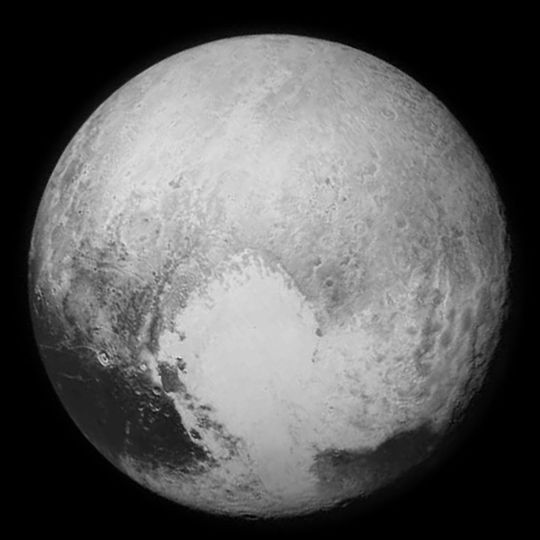Hunting for Planet X

Artist’s concept of a Kuiper belt object, targeted by New Horizons
THE WASHINGTON POST’s Joel Achenbach reports that New Horizons, fresh off its spectacular fly-by of Pluto on July 14, next searches for the mysterious Planet X.
Astronomers so far have detected about 1,500 icy bodies in the Kuiper Belt, according to Scott Sheppard, an astronomer with the Carnegie Institution of Washington. A few of them are big enough to rank as “dwarf planets.” And there may be something much bigger lurking out there in the dark, says Sheppard. There are tantalizing hints of a hidden planet that’s bigger than Pluto, perhaps even bigger than the Earth – potentially Neptune-sized.
“I think there are definitely things out there bigger than Pluto that are yet to be discovered,” Sheppard told us.
Sheppard and Chad Trujillo of the Gemini Observatory in Hawaii published a paper in the journal Nature in 2014 saying that “a massive outer Solar System perturber may exist.” The paper reported discovery of what appears to be a dwarf planet, dubbed 2012 VP113 (nicknamed “Biden”), that’s currently about three times farther from the sun than is Pluto – out beyond Kuiper Belt. In describing this new world, the astronomers noted that a number of large, very remote objects share a similar orbital angle. That’s suspicious if you’re an astronomer expecting to see a random distribution of objects.

Pluto viewed by New Horizons (July 13 2015)
So then, how would such a big planet get way out there? Brown hypothesizes that, long ago, the planet formed closer to the sun, and might have been the core of what would have become a giant planet like Jupiter or Saturn. But then it could have been ejected toward the outer solar system through gravitational interactions with other giant planets.
If this Planet X is out there, why can’t we see it directly? Because it’s very far away and commensurately faint. It could be at least 200 Astronomical Units from the sun – meaning 200 times farther from the sun than is the Earth. These hypothetical planets, dwarf or otherwise, don’t generate their own light, and can only be seen through the feeble reflected light of the sun.
Read the rest of Achenbach’s article at THE WASHINGTON POST.
